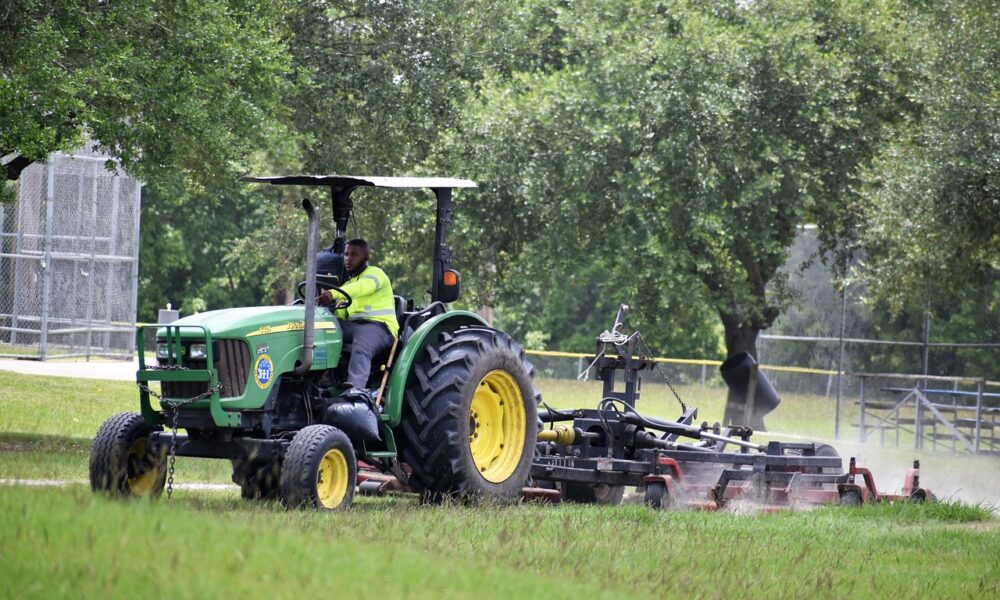Agricultural Innovation: How Blockchain Creates Accountability in the Food Industry

The global food system faces unprecedented challenges. With approximately one-third of all food produced for human consumption lost or wasted annually along the supply chain, while up to 800 million people remain chronically undernourished, the need for revolutionary solutions has never been more urgent. Enter blockchain technology – a digital innovation that’s transforming how we track, verify, and trust our food from farm to fork.
As supply chain disruptions intensify due to global crises, climate change, and geopolitical shifts, the food industry is turning to blockchain as a beacon of transparency and accountability. This technology promises to address critical issues plaguing modern agriculture: food safety concerns, supply chain opacity, and growing consumer demands for traceability.
The Current State of Food Supply Chain Transparency
Rising Risks in Global Food Sourcing
The complexity of modern food supply chains has created a perfect storm of challenges. According to industry data, 90% of food companies confirm that risks associated with global sourcing have increased significantly in recent years. This escalation stems from multiple factors:
Supply Chain Vulnerabilities: The COVID-19 pandemic exposed critical weaknesses in global food distribution networks, highlighting how quickly disruptions can cascade through interconnected systems. Geopolitical tensions and climate-related events continue to compound these challenges.
Lack of Visibility: Traditional supply chains often involve multiple intermediaries, making it nearly impossible to trace products back to their origins. This opacity creates blind spots where contamination, fraud, or unethical practices can occur undetected.
Consumer Trust Deficit: Modern consumers increasingly want to know where their food comes from and under what conditions it was produced. The disconnect between consumer expectations and industry transparency has created a significant trust gap.
The Transparency Imperative
Industry experts identify transparency as the number one future trend in food logistics, affecting the entire value chain. This shift isn’t merely about meeting regulatory requirements – it’s about building sustainable, resilient food systems that can withstand future shocks while maintaining consumer confidence.
The lack of transparency in supply chains is now recognized as a fundamental risk to food safety and consumer trust. When contamination occurs, companies often struggle to identify the source quickly enough to prevent widespread health impacts. The 2018 romaine lettuce E. coli outbreak, which took weeks to trace back to specific farms, exemplifies this challenge.
How Blockchain Technology Works in Agriculture
Understanding Blockchain Fundamentals
Blockchain technology creates an immutable, distributed ledger that records transactions across multiple computers. In agricultural applications, each “block” contains information about a product’s journey through the supply chain – from seed to shelf. Once recorded, this information cannot be altered without detection, creating an unprecedented level of data integrity.
Key Features for Agriculture:
- Immutability: Records cannot be changed once entered
- Transparency: All authorized parties can access the same information
- Decentralization: No single point of failure or control
- Real-Time Updates: Information is updated as products move through the supply chain
Practical Applications in Food Production
Blockchain implementation in agriculture typically involves several key components:
- Digital Identity Creation: Each product or batch receives a unique digital identifier, often in the form of a QR code or RFID tag. This identifier links to a blockchain record containing comprehensive information about the product’s origin, processing, and journey.
- Smart Contracts: Automated agreements are carried out when pre-determined conditions are met. For example, a smart contract might automatically release payment to a farmer when their produce passes quality inspections and reaches the distributor.
- IoT Integration: Internet of Things sensors can automatically record temperature, humidity, and other environmental conditions, feeding this data directly into the blockchain record. This creates an unbroken chain of custody and condition monitoring.
Benefits of Blockchain Implementation
Enhanced Food Safety and Rapid Response
One of blockchain’s most significant advantages is its ability to enable rapid response during food safety incidents. Traditional traceability systems can take days or weeks to identify contamination sources. Blockchain systems can potentially reduce this timeframe to minutes or hours.
Case Study Impact: When Walmart implemented blockchain for leafy greens traceability, they reduced the time needed to trace contaminated products from over six days to just 2.2 seconds. This dramatic improvement could prevent widespread illness and reduce the scope of product recalls.
Supply Chain Optimization
Blockchain provides unprecedented visibility into supply chain operations, enabling companies to identify inefficiencies and optimize processes:
- Inventory Management: Real-time tracking reduces waste by providing accurate information about product location and condition throughout the supply chain.
- Quality Assurance: Continuous monitoring and recording of storage conditions helps maintain product quality and extend shelf life.
- Cost Reduction: Improved efficiency and reduced waste translate directly into cost savings. The technology also reduces the need for extensive paperwork and manual verification processes.
Building Consumer Trust
Today’s consumers want transparency about their food choices. Blockchain enables companies to provide detailed product histories that consumers can access through simple smartphone scans:
- Origin Verification: Consumers can verify claims about organic certification, fair trade practices, or local sourcing.
- Sustainability Tracking: Environmental impact data can be recorded and shared, supporting sustainability initiatives.
- Authenticity Assurance: Blockchain helps combat food fraud by providing verifiable proof of product authenticity.
Challenges and Limitations
Technical and Infrastructure Barriers
Despite its promise, blockchain implementation faces several significant challenges:
- Technology Adoption: Many agricultural operations, particularly smaller farms, lack the technical infrastructure or expertise needed to implement blockchain solutions effectively.
- Standardization Issues: The absence of industry-wide standards makes it difficult to create interoperable systems that work across different companies and regions.
- Scalability Concerns: Current blockchain networks may struggle to handle the massive volume of transactions required for global food supply chains.
Economic Considerations
- Implementation Costs: Initial setup costs can be substantial, particularly for smaller operations that may struggle to justify the investment.
- Return on Investment: While long-term benefits are clear, the immediate financial returns may not be, making it difficult to secure buy-in from stakeholders.
- Training and Education: Staff at all levels of the supply chain require training to use blockchain systems effectively, adding to implementation costs.
Data Quality and Accuracy
Blockchain’s effectiveness depends entirely on the quality of data entered into the system. “Garbage in, garbage out” remains a fundamental challenge:
- Human Error: Manual data entry can introduce errors that become permanently recorded in the blockchain.
- Verification Challenges: Ensuring the accuracy of initial data entry requires robust verification processes that may be difficult to implement consistently.
The Future of Blockchain in Agriculture
Technological Advancements
Several emerging technologies will enhance blockchain’s effectiveness in agriculture:
- Artificial Intelligence Integration: AI can analyze blockchain data to identify patterns, predict potential issues, and optimize supply chain operations.
- Advanced IoT Sensors: More sophisticated sensors will provide richer, more accurate data about product conditions and environmental factors.
- 5G Connectivity: Faster, more reliable internet connections will enable real-time data transmission from remote agricultural locations.
Industry Predictions
Industry experts predict significant growth in blockchain adoption:
- Universal Traceability: Two-thirds of companies (68%) predict achieving 100% traceability to product origins through digital technologies like blockchain, big data and digital farming within the next decade.
- Regulatory Support: Governments worldwide are beginning to recognize blockchain’s potential for food safety and are developing supportive regulatory frameworks.
- Consumer Demand: As awareness grows, consumer demand for blockchain-verified products is expected to drive widespread adoption across the industry.
Collaborative Ecosystems
The future of agricultural blockchain lies in collaborative platforms that connect all supply chain participants:
- Industry Consortiums: Groups of companies working together to develop shared blockchain platforms that benefit the entire industry, such as the 2020 consortium that protected Northern Irish products.
- Government Partnerships: Public-private partnerships that leverage government resources to support blockchain implementation, particularly for smaller operations.
- International Standards: Development of global standards that enable seamless data sharing across borders and between different blockchain systems.
Conclusion
Blockchain technology represents a paradigm shift in agricultural accountability and transparency. As the food industry grapples with increasing complexity, consumer demands, and global challenges, blockchain offers a path toward more resilient, trustworthy supply chains.
The statistics are compelling: with one-third of food lost or wasted annually and 90% of food companies reporting increased sourcing risks, the need for innovative solutions is undeniable. Blockchain’s ability to provide immutable, transparent records addresses these challenges head-on, offering benefits that extend from improved food safety to enhanced consumer trust.
While challenges remain – from technical barriers to implementation costs – early adopters are already demonstrating blockchain’s transformative potential. As technology continues to evolve and costs decrease, blockchain adoption in agriculture is poised for exponential growth.
The future of food lies in transparency, traceability, and trust. Blockchain technology provides the foundation for building these pillars, creating a more accountable, efficient, and sustainable food system for generations to come. As we move forward, the question isn’t whether blockchain will transform agriculture, but how quickly the industry can adapt to harness its full potential.

Source: Agricultural Innovation: How Blockchain Creates Accountability in the Food Industry




